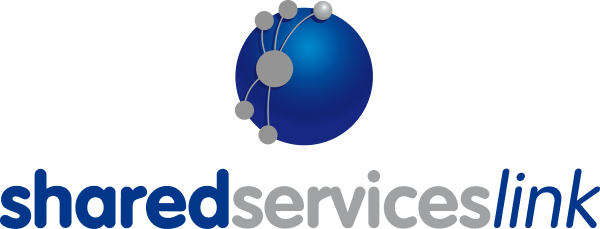Digital Transformation at GE Power

Digital Transformation has shifted from a goal to necessity for many shared services organizations. But what does digital transformation actually look like for shared services organisations? And what can they do to prepare?
Vivek Thakral, Director of Artificial Intelligence at GE Power shared his experience with us about their digital transformation journey the company has been on, what kick-started the process and what learnings were picked up along the way.
View the webinar today for the full presentation.
GE Power’s Digital Transformation Journey
GE Power, owned by General Electric, is a world energy leader in power generation and water technologies. Operating in more than 180 countries, it produces a third of the world’s electricity. In 2018, their annual revenue was $121bn. The company has 100 different manufacturing sites and 2,500 IT systems.
Why Digital?
Providing a good-quality, efficient service is the goal of most shared services organisations. Thakral said that as labour arbitrage savings within GE Power had decreased, he saw digitisation as the natural next step to run the business effectively.
Shared services organisations, Thakral said, are an excellent place to help drive savings and solve business problems, as you have “central data lakes that give you a single source of truth and insight into your business operations and business needs – as well as systems that connect to various functions.” He added, “Digital transformation enables cost reduction, while improving performance metrics and customer satisfaction.”
Preparing for digital transformation and identifying the opportunities
The first step on GE’s journey to digitisation was understanding what technology was on the market and what kind of infrastructure and governance was needed. Thakral and his team spent time attending events, talking to consultants and peers about what automation opportunities existed and which skillsets were needed to implement them.
GE Power also analysed its processes across manufacturing, finance services and field services. It found there are more than 2,500 processes that are done manually every day, with millions of hours spent on executing them. In addition, calculations revealed that a staggering half a million man-hours are spent rectifying human errors in the original transactions.
To find which areas to automate first, the team narrowed down the top-10 manual processes. These included the movement of goods between warehouses, invoice creation, invoice distribution, the creation of journal ledger entries, cash application, cash collection and dispute management. All of these were found to be laborious processes. They chose one process – customer billing - to automate as a proof of concept.
Rolling out their first project
The team implemented a bot which was responsible for billing. In many ways, the robot was taken on like a normal employee. It was given an employee ID and a manager. They even gave him a name – Max. The bot’s job was to create customer invoices based on approved sales orders and purchase orders. It was tasked with making sure that the invoice data, including the name of the customer, bill to, dollar amount and payment terms were accurate. The bot sat in the North American billing team and distributed invoices electronically and via a portal.
It quickly transpired that compared with a human carrying out the same process, the robot saved about 1 hour and 20 minutes per invoice – and there were a lot of invoices! In the billing team alone 5000 invoices were processed, so they were able to save 7,000 manual hours using one bot alone.
The team shared its results with the GE Power CEO who gave them the green light to proceed on their automation journey. There are now 54 automations live in GE Power enterprise architecture, a saving of more than 100,000 man-hours. But Thakral is keen to point out that this doesn’t mean the company should automatically cut lots of jobs.
Thakral said: “We are not suggesting that these are specific human beings or FTEs (Full Time Equivalents). We are suggesting that we have given 100,000 hours of productivity time back to the company so they can better utilise the human workforce and make them more efficient and effective.”
From ‘doing digital’ to ‘being digital’
Despite GE’s significant investment in and gains from digital technology, Thakral realises they are probably only now at the inflection point for what would be considered true transformation. They have been ‘doing digital’ but are only just now ‘becoming digital’.
Thakral laid out a guide on the evolution from starting from implementing mainstream digital technologies to becoming a truly digital business.
“Doing Digital”
- Adopt technologies as they become industry standard
- Identify and replace outdated technology infrastructure
- Enhance cross-team experience using technology
- Add tools to improve team flexibility and mobility
- Dedicate teams to identifying potentially disruptive technologies
- Adopt and apply digital leadership competencies
“Being Digital”
- Identify and target gaps in digital leadership and team capabilities
- Re-organize talent structures to reflect the global digital workforce
- Lead the market in identifying and adopting disruptive technology
- Leverage digital capabilities as a core competency and competitive differentiator
- Use digital leadership mindset to drive business strategies and structures
The first part of the journey, ‘doing digital’, is really about getting the basics of the technology right. The second half is about addressing your team, organisational structure and leadership capabilities. The technology itself isn’t really what is transformative. Transformation comes in when robots are core members of your team and the technology has probably disrupted your traditional ways of working.
Thakral said, “The way I look at GE as a company, we think we are somewhere in the middle. We are investing heavily into our key enterprise solutions and architecture to digitise our business needs and operations. At the same time, we are making sure that the data and information is available to the key strategic decision-making leaders. We are in the middle of the journey from ‘doing digital’ to ‘being digital.”
Automation’s Impact on the Workforce
As was the case at GE, saving hours does not necessarily mean job mass-redundancies or job cuts. Instead, it is a chance to cut out employees’ repetitive, manual work so their skills can be put to better use elsewhere in the organisation.
Part of the journey to digitisation is defining work that is done – rather than just job descriptions –and then to think about what robots can do, and what humans do better. Thakral said: “You may not be able to automate the entire process. With most jobs, there are important elements of human decision-making including negotiation with suppliers and maintaining relationships, but there are tasks that you can automate. “That’s where the majority of the automation is, in task automation.” He added, “Then think about how to add cognitive skills.” For example, you may automate by installing a chatbot that can help an employee look for a Purchase Order or Invoice number. With more cognitive automation you can train the bot, if there isn’t a purchase order, to create one on demand.
In a digital work environment, human beings and robots will work together. Humans can use bots as their virtual assistants to do digital tasks. Humans will work alongside bots and can help fine-tune the automation. They can help change the rules, understand the exceptions and make decisions to make the best use of the automation.
The workplaces of the future will in all likelihood be an ecosystem made up of a human and non-human workforce. Companies will have to re-examine their organisational structure to accommodate this shift. Robots will be seen as a resource just like employees, contractors and freelancers. The human/automation combination will redefine work and how it should be organised.
Governing Digital Transformation
At GE Power, a governance council was founded. The council includes a mixture of technical, finance, HR and business experts that evaluate and monitor every instance of automation.
More specifically, the GE council comprises:
• An automation expert – someone with an IT background who can understand if a specific process can be automated.
• Someone from financial planning and analysis who evaluates the return on investment in automation.
• An HR business partner who closely monitors the impact on workforce and how automation will change the roles and responsibilities of existing employees.
• A technical architecture team to provide a framework for automation within the cyber security controls and compliance framework.
• An ‘evangelist’ - someone who understands business process and makes recommendations for tasks that could be automated.
Using all this expertise, the governance council evaluates whether projects go ahead and then monitors their progress.
